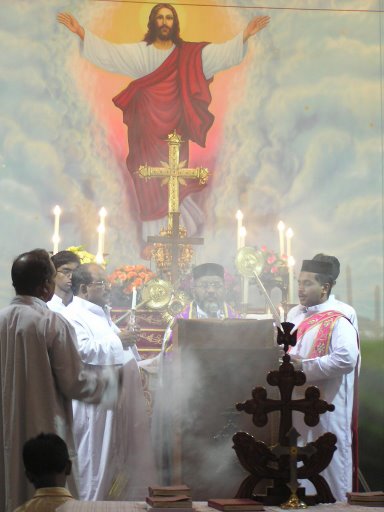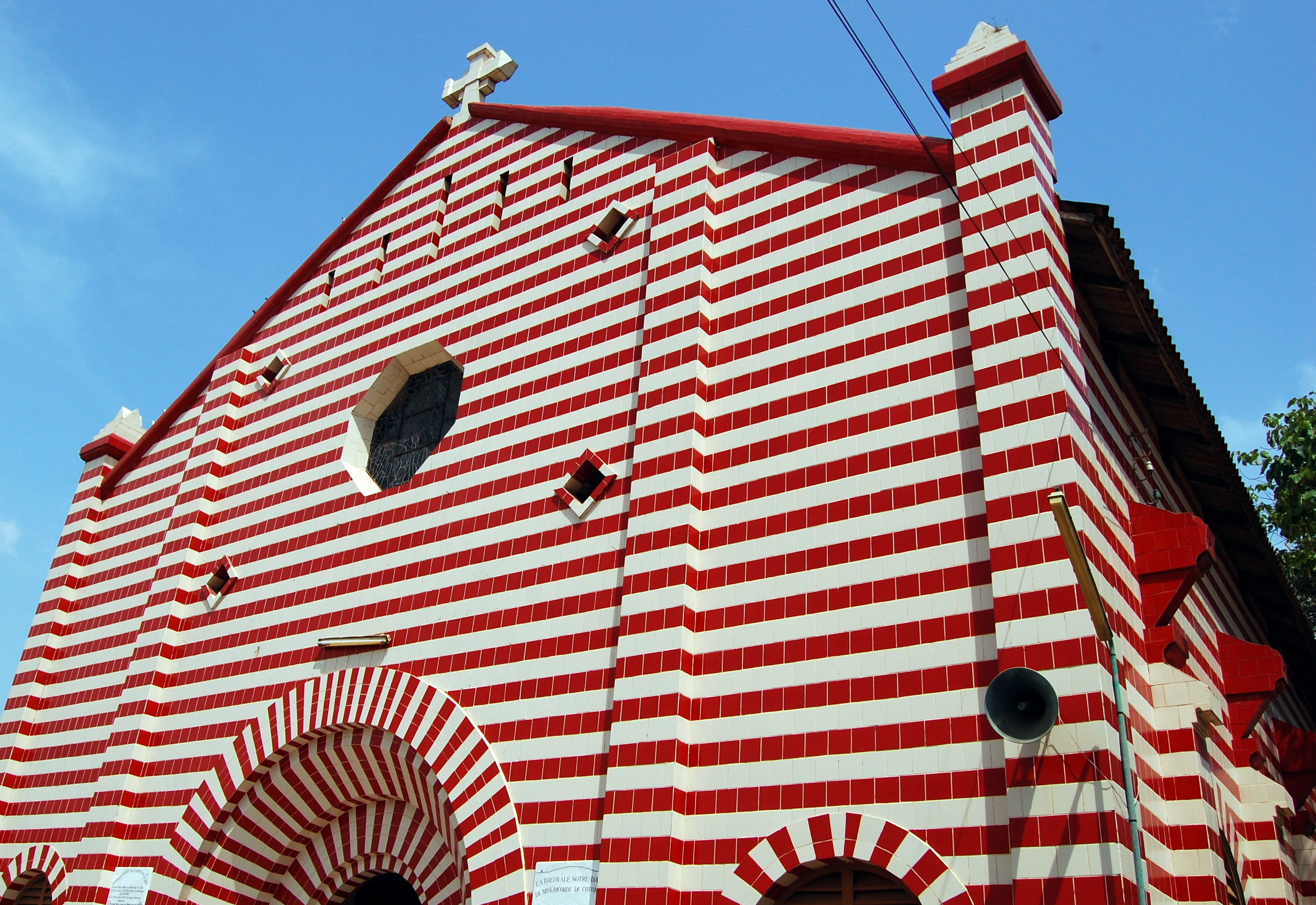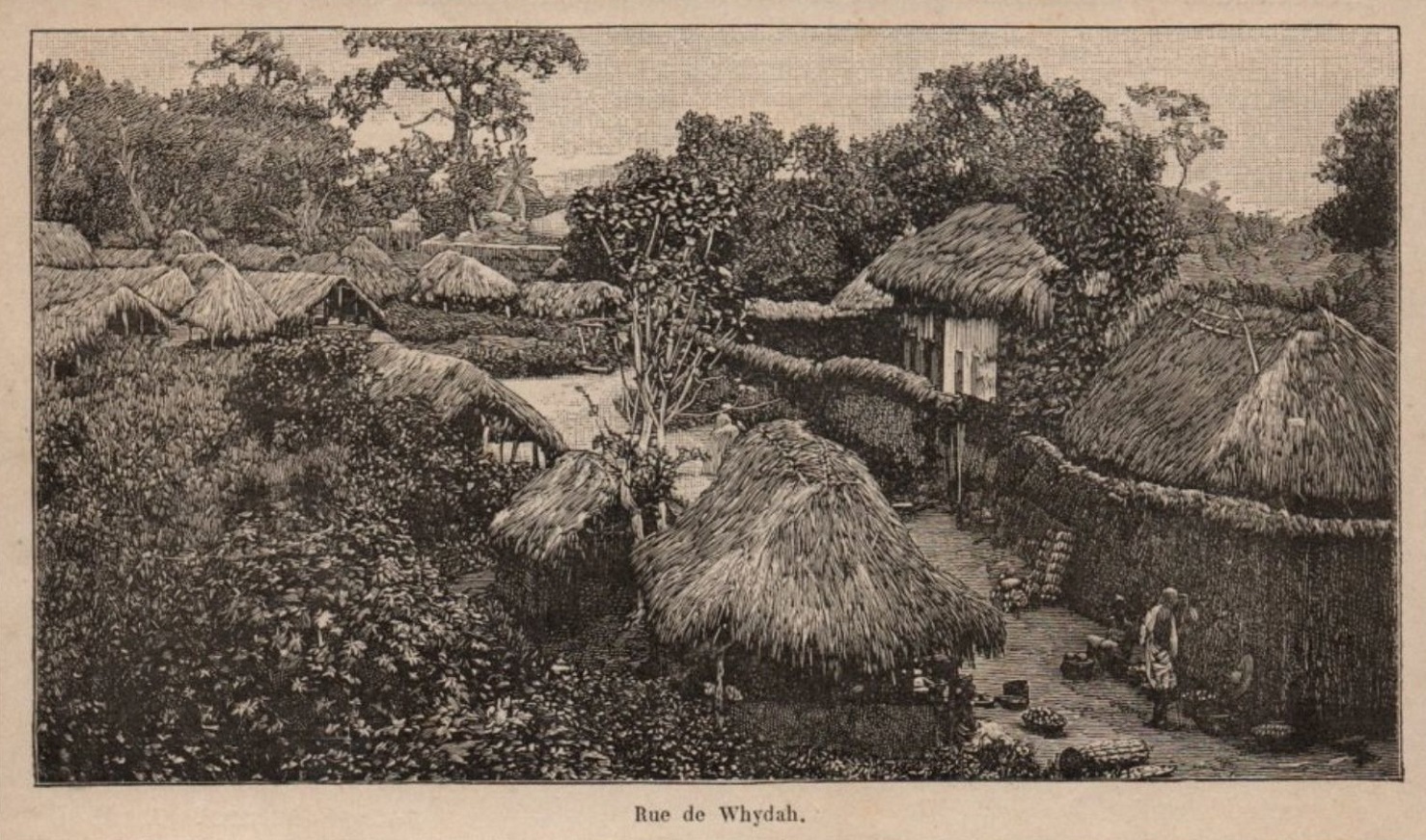|
Freedom Of Religion In Benin
The Constitution provides for freedom of religion, and the Government generally respected this right in practice. There were no reports of societal abuses or discrimination based on religious belief or practice, and prominent societal leaders took positive steps to promote religious freedom. Religious demography According to the 2002 census, 27.1 percent of the population is Roman Catholic, 24.4 percent Muslim, 17.3 percent Vodun, 5 percent Celestial Christian, 3.2 percent Methodist, 7.5 percent other Christian, 6 percent other traditional local religious groups, 1.9 percent other religious groups, and 6.5 percent claim no religious affiliation. Foreign missionary groups operate freely in the country. In 2020, the population of Benin was 52.2% Christian, 24.6% Muslim, 17.9% Animist and 5.3% following other faiths or none. Status of religious freedom Legal and policy framework The Constitution provides for freedom of religion, [...More Info...] [...Related Items...] OR: [Wikipedia] [Google] [Baidu] |
Constitution Of Benin
The Constitution of Benin was adopted by referendum on 23 December 1956. The constitution is made up of a preamble, twelve titles, and 160 articles. Preamble (Preamble text comes from thEnglish translationof the Beninese Constitution via the Constitution Project Dahomey, proclaimed a Republic on December 4, 1958, acceded to international sovereignty August 1, 1960. Having become the People's Republic of Bénin on November 30, 1975, and then the Republic of Bénin on March 1, 1990, it has known a turbulent constitutional and political evolution since its accession to independence. Only the option in favor of the Republic has remained permanent. The successive changes of political regimes and of governments have not blunted the determination of the Béninese people to search for, in their own spirit, the cultural, philosophical and spiritual values of civilization which sustain the forms of their patriotism. Thus, the National Conference of Active Forces of the Nation, held in Cot ... [...More Info...] [...Related Items...] OR: [Wikipedia] [Google] [Baidu] |
Ascension Day
The Solemnity of the Ascension of Jesus Christ, also called Ascension Day, Ascension Thursday, or sometimes Holy Thursday, commemorates the Christian belief of the bodily Ascension of Jesus into heaven. It is one of the ecumenical (i.e., shared by multiple denominations) feasts of Christian churches, ranking with the feasts of the Passion and Pentecost. Following the account of that the risen Jesus appeared for 40 days prior to his Ascension, Ascension Day is traditionally celebrated on a Thursday, the fortieth day of Easter; although some Christian denominations have moved the observance to the following Sunday. The day of observance varies by ecclesiastical province in many Christian denominations, as with Methodists and Catholics, for example. History The observance of this feast is of great antiquity. Eusebius seems to hint at the celebration of it in the 4th century. At the beginning of the 5th century, Augustine of Hippo says that it is of Apostolic origin, and he speaks o ... [...More Info...] [...Related Items...] OR: [Wikipedia] [Google] [Baidu] |
Freedom Of Religion By Country
The status of religious freedom around the world varies from country to country. States can differ based on whether or not they guarantee equal treatment under law for followers of different religions, whether they establish a state religion (and the legal implications that this has for both practitioners and non-practitioners), the extent to which religious organizations operating within the country are policed, and the extent to which religious law is used as a basis for the country's legal code. There are further discrepancies between some countries' self-proclaimed stances of religious freedom in law and the actual practice of authority bodies within those countries: a country's establishment of religious equality in their constitution or laws does not necessarily translate into freedom of practice for residents of the country. Additionally, similar practices (such as having citizens identify their religious preference to the government or on identification cards) can hav ... [...More Info...] [...Related Items...] OR: [Wikipedia] [Google] [Baidu] |
Islam In Benin
Religion in Benin is characterized by diversity and pluralism, with no particular religion constituting an absolute majority of the population. Christianity is the most widely professed religion, and substantial populations of Muslims and adherents of Traditional Faiths are also present in the country. According to the most recent 2013 census, the population of Benin is 27.7% Muslim, 25.5% Roman Catholic, 13.5% Protestant (which includes Celestial 6.7%, Methodist 3.4%, and other Protestant 3.4%), 11.6% Vodun, 9.5% of other Christian denominations, and 12.2% of others or none. There are Christians, Muslims, and adherents of African Traditional Religion throughout the country.International Religious Freedom Report 2007: Benin United States |
Catholic Church In Benin
The Catholic Church in Benin is part of the worldwide Catholic Church, under the spiritual leadership of the Pope in Rome. There are an estimated 1.5 million baptised Catholics in the Republic of Benin, or about 23% of the population, in ten dioceses and archdioceses. There are 440 priests and 900 men and women in religious orders. Description The Catholic Church in Benin gave one of its most esteemed bishops, Archbishop Bernardin Gantin of Cotonou, to the Roman Curia as Cardinal Prefect of the Sacred Congregation for Bishops and as Dean of the Sacred College of Cardinals. He worked closely and was a personal friend of both Pope John Paul II, who brought him to Rome, and Benedict XVI, who spoke of him when he visited his tomb in Ouidah, Benin in November 2011, as part of a visit to that country. Archbishop Mark Miles has been designated Archbishop of Benin and Togo. Within Benin the hierarchy consists of: *Cotonou **Abomey **Dassa-Zoumé **Lokossa **Porto Novo *Parakou **D ... [...More Info...] [...Related Items...] OR: [Wikipedia] [Google] [Baidu] |
Christianity In Benin
Christians in Benin constitute approximately 48.5 of the country's population (2022 estimate). According to the 2002 census, 27.1 percent of the population of Benin is Roman Catholic, 5 percent Celestial Christian, 3.2 percent Methodist, 7.5 percent other Christian groupsInternational Religious Freedom Report 2007: Benin United States (September 14, 2007). ''This article incorporates text from this source, which is in the .'' ( [...More Info...] [...Related Items...] OR: [Wikipedia] [Google] [Baidu] |
Religion In Benin
Religion in Benin is characterized by diversity and pluralism, with no particular religion constituting an absolute majority of the population. Christianity is the most widely professed religion, and substantial populations of Muslims and adherents of Traditional Faiths are also present in the country. According to the most recent 2013 census, the population of Benin is 27.7% Muslim, 25.5% Roman Catholic, 13.5% Protestant (which includes Celestial 6.7%, Methodist 3.4%, and other Protestant 3.4%), 11.6% Vodun, 9.5% of other Christian denominations, and 12.2% of others or none. There are Christians, Muslims, and adherents of African Traditional Religion throughout the country.International Religious Freedom Report 2007: Benin United States |
Ouidah
Ouidah () or Whydah (; ''Ouidah'', ''Juida'', and ''Juda'' by the French; ''Ajudá'' by the Portuguese; and ''Fida'' by the Dutch) and known locally as Glexwe, formerly the chief port of the Kingdom of Whydah, is a city on the coast of the Republic of Benin. The commune covers an area of and as of 2002 had a population of 76,555 people. History In local tradition Kpassa is supposed to have founded the town. This probably happened towards the end of the sixteenth century. The town was originally known as ''Glēxwé'', literally 'Farmhouse', and was part of the Kingdom of Whydah. Ouidah saw its role in international trade rise when the Royal African Company (RAC) constructed a fort there in 1650. Whydah troops pushed their way into the African interior, capturing millions of people through wars, and selling them to European and Arab slave traders. By 1716, the Kingdom of Whydah had become the second largest slave port in the triangular trade, as noted by the crew of the slave ... [...More Info...] [...Related Items...] OR: [Wikipedia] [Google] [Baidu] |
Ecumenical Day
Ecumenism (), also spelled oecumenism, is the concept and principle that Christians who belong to different Christian denominations should work together to develop closer relationships among their churches and promote Christian unity. The adjective ''ecumenical'' is thus applied to any initiative that encourages greater cooperation and union among Christian denominations and churches. The fact that all Christians belonging to mainstream Christian denominations profess faith in Jesus as Lord and Saviour over a believer's life, believe that the Bible is the infallible, inerrant and inspired word of God (John 1:1), and receive baptism according to the Trinitarian formula is seen as being a basis for ecumenism and its goal of Christian unity. Ecumenists cite John 17:20-23 as the biblical grounds of striving for church unity, in which Jesus prays that Christians "may all be one" in order "that the world may know" and believe the Gospel message. In 1920, the Ecumenical Pat ... [...More Info...] [...Related Items...] OR: [Wikipedia] [Google] [Baidu] |
Mawlid
Mawlid, Mawlid an-Nabi ash-Sharif or Eid Milad un Nabi ( ar, المولد النبوي, translit=mawlid an-nabawī, lit=Birth of the Prophet, sometimes simply called in colloquial Arabic , , among other vernacular pronunciations; sometimes , ) is the observance of the birthday of the Islamic prophet Muhammad which is commemorated in Rabi' al-awwal, the third month in the Islamic calendar. 12th Rabi' al-awwal is the accepted date among most of the Sunni scholars, while most Shia scholars regard 17th Rabi' al-awwal as the accepted date, though not all Shias consider it to be this date. It is also called Maouloud in West Africa. The history of this celebration goes back to the early days of Islam when some of the Tabi‘un began to hold sessions in which poetry and songs composed to honour Muhammad were recited and sung to the crowds. It has been said that the first Muslim ruler to officially celebrate the birth of Muhammad in an impressive ceremony was Muzaffar al-Din Gökböri ... [...More Info...] [...Related Items...] OR: [Wikipedia] [Google] [Baidu] |
Tabaski
Eid al-Adha () is the second and the larger of the two main holidays celebrated in Islam (the other being Eid al-Fitr). It honours the willingness of Ibrahim (Abraham) to sacrifice his son Ismail (Ishmael) as an act of obedience to Allah's command. Before Ibrahim could sacrifice his son, however, Allah provided him with a lamb which he was supposed to kill in his son's place because of his willingness to sacrifice his own son in the name of God. In commemoration of this intervention, animals are ritually sacrificed. Part of their meat is consumed by the family which offers the animal, while the rest of the meat is distributed to the poor and the needy. Sweets and gifts are given, and extended family members are typically visited and welcomed. The day is also sometimes called the Greater Eid. In the Islamic lunar calendar, ''Eid al-Adha'' falls on the tenth day of Dhu al-Hijjah and lasts for four days. In the international (Gregorian) calendar, the dates vary from year to ... [...More Info...] [...Related Items...] OR: [Wikipedia] [Google] [Baidu] |
Ramadan
, type = islam , longtype = Religious , image = Ramadan montage.jpg , caption=From top, left to right: A crescent moon over Sarıçam, Turkey, marking the beginning of the Islamic month of Ramadan. Ramadan Quran reading in Bandar Torkaman, Iran. Community Iftar meal in Dubai, United Arab Emirates, Tarawah prayers in a mosque in West Sumatra, Indonesia. Foods served at a traditional Iftar meal. Ramadan decorations in Jerusalem. Zakat donation boxes in Taipei, Taiwan. , official_name = , observedby = Muslims , begins = At the last night of the month of Sha'ban , ends = At the last night of the month of Ramadan , date = Variable (follows the Islamic lunar calendar) , date2022 = 2 April – 2 May , celebrations = Community iftars and Community prayers , observances = * Sawm (fasting) * Zakat and sadaqah (alms giving) * Commemorating Qadr Night * Reading the Quran * Abstaining from all bad deeds and staying humble * Taraweeh prayer (Sunni Muslims) , relatedto = Eid al-F ... [...More Info...] [...Related Items...] OR: [Wikipedia] [Google] [Baidu] |








